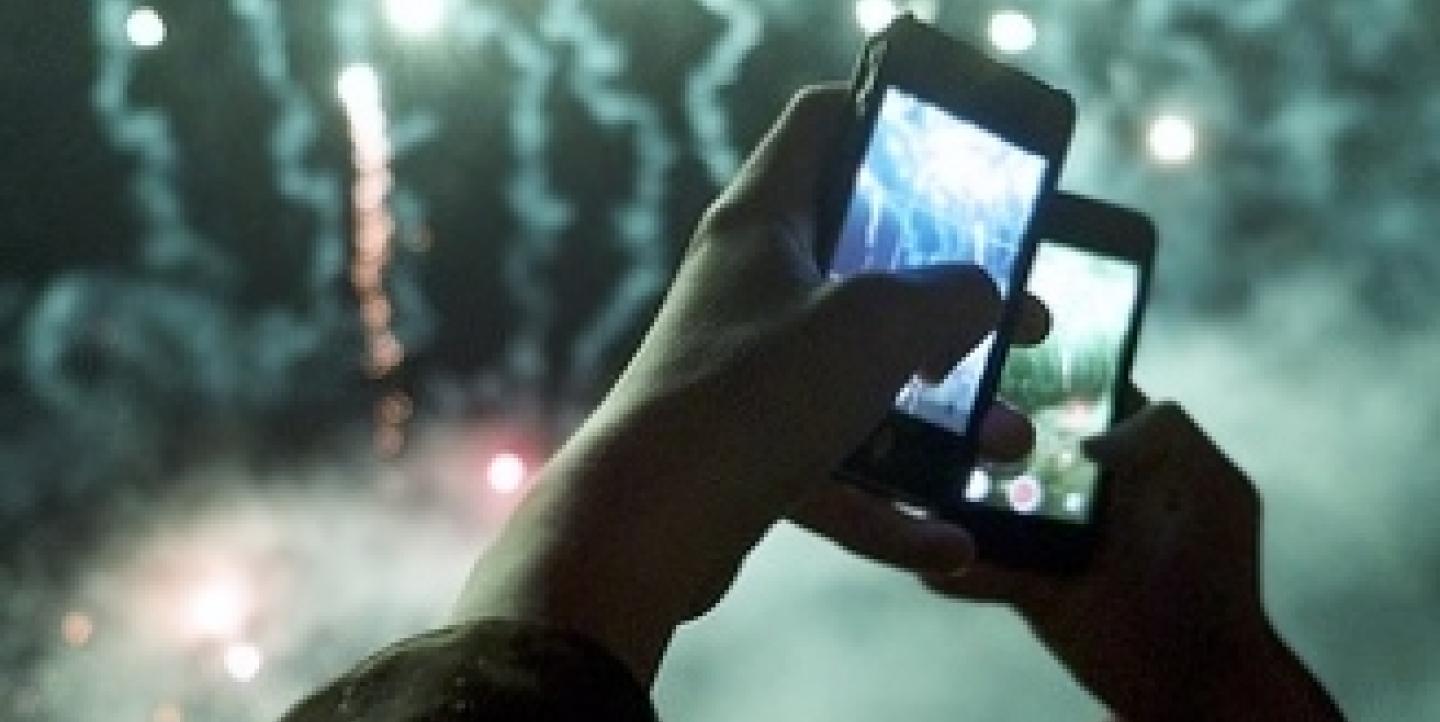You don't need to invest in high-priced photography equipment to nail the perfect shot.
During a live video chat, The Wall Street Journal asked three professional photographers to share their opinions as they reviewed the stand-out reader-submitted Instagram pics of 2013.
Moderated by WSJ Deputy Photo Director Taylor Umlauf, the chat featured staff photojournalist for Getty Images Andrew Burton, former community manager at NBC News and photographer Anthony Quintano and freelance photographer Daniella Zalcman.
From composing a shot to capturing the right moment, these tips will have you tagging #nofilter on more of your images.
- Capturing the moment
When it comes to memorializing a moment like the one in the picture below (seemingly edited with Hipstamatic), Burton suggests finding the subject and then simply being patient. "You have to know what you want to photograph and go looking for it," he said. "In journalism school when you’re taking photo classes, they’ll teach you to compose a frame and wait for the moment to happen. That’s what this photo looks like - it’s very controlled and well-composed.”
- Experimenting with advanced techniques
The picture below is a take on a double-exposure image. While Zalcman points out that the image isn't a true double-exposure shot, she suspects the photographer used an app to overlay one image on top of the other. Her favorite app for creating this effect is Image Blender, which lets you overlay images, scratch through and reveal parts of a picture and exports images at full size. While the app may not be appropriate for straight news photos, it could be useful when a more whimsical image is appropriate.
- Finding the right exposure
For sunset and scenic shots alike, Zalcman offers a tip on choosing the exposure (quantity of light) you seek. "When you’re shooting with an iPhone, you can tap anywhere on the screen when you’re in camera mode, and it’ll expose to whatever you just hit," she said. So in the image below, she suggests tapping near the purples and blues to keep the soft-toned light and retain all detail of the paddle-boarder.
- Embracing the wild and "glitchy"
Not only a prime example of enigmatic light and composition, the image below is a shot that couldn't be easily captured with top-notch tools. "This is a good example of images that sometimes you can only make with an iPhone, whereas the professional equipment we use is a little too precise and a little too exact sometimes," Zalcman said. "The joy of smartphones is that sometimes it’s a little wild and a little glitchy."
- Finding a unique angle
The Cloud Gate is an oft-captured tourist attraction for Chicago visitors, but the unique angle below took extra effort. "For the average user a lot of people don’t take the time and effort that pro-Instagram users do," Quintano said. "For myself, I’m always looking. I’m always looking at different angles. I’m getting on the ground, climbing fences, different stuff to try and get something that isn't’t normally taken by a tourist. And I think that’s what makes images like this happen."
- Finding the light
Quintano suggests trying to avoid pointing directly at the sun. Burton said photojournalists typically opt for "golden hour," which is the hour surrounding either sunrise or sunset. For images without much action or movement - like your quintessential food pic - "a good source of light can help define shapes and shadows," Burton said. And if the light isn't there, stick a filter onto it.
Even accentuating images with dark light can make for a powerful image. Quintano thinks the image below was probably touched with the HDR scape in Snapseed (available for iOS and Android) to give the clouds a painting-like, ominous feel. Zalcman offered a nod to the “surprisingly sophisticated” in-camera HDR feature for the iPhone, but she cautions that “it’s really easy to abuse and create this, to me, pretty tacky and muddy image."
IJNet Editorial Assistant Margaret Looney writes about the latest media trends, reporting tools and journalism resources.
Main image CC-licensed on Flickr via SteveMcN.

